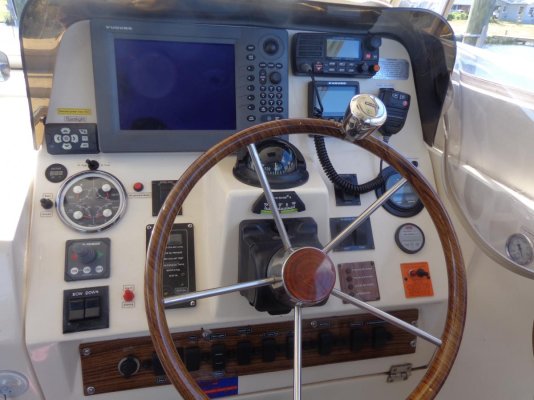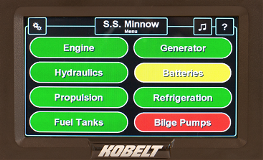stevemitchell
Guru
- Joined
- Sep 25, 2018
- Messages
- 542
- Location
- USA
- Vessel Name
- Aruna
- Vessel Make
- Kristen Yachts 50 Pilot House
Having spent most of my life working on computers and marine electronics, I can say that choosing what works for you is about as unique as the way you like your coffee, the type of alcohol you prefer, what type of car/truck you like/drive, or whether you prefer Mac or PC. I could go on and on....
When I work with clients, I find that the reasons and choices are driven mostly by a matrix of facts/needs/wants that have varying weights, and partially based on preferences. It is very hard to try to make those decisions without a lot of back and forth.
I find the most effective way is to write up a list of things that will help point you in one direction or another. Include things like:
What must it do all the time?
What conditions am I operating in?
What would be nice to have?
What sort of data do I need to see and when?
Do things change when I am at anchor or underway? What about docking?
How much power do I have to work with?
A list of all things you want to interface with it (this is one of the critical items)
I find making a nice big list of all of the different use cases, things that connect, and how you want to use it helps flesh out areas you might not have considered. Once you have the list, usually it filters things down to one or two brands, or in rarer cases, one or two models.
I use both MFDs and PC/Macs everywhere on my boat. I have 6 MFDs currently running from all the major brands, and at least 5 PCs and 2 Macs of varying types. While the software for the PC/Mac side has gotten very good, I would never trust one in an exposed helm station regardless of the treatment. That is the one main reason to still consider an MFD in my mind.
I personally prefer the Furuno TZT2 series because of how reliable and performant it is, but again, this is very focused around personal preference. Almost all of the major brands will do 90% of what most people need.
When I work with clients, I find that the reasons and choices are driven mostly by a matrix of facts/needs/wants that have varying weights, and partially based on preferences. It is very hard to try to make those decisions without a lot of back and forth.
I find the most effective way is to write up a list of things that will help point you in one direction or another. Include things like:
What must it do all the time?
What conditions am I operating in?
What would be nice to have?
What sort of data do I need to see and when?
Do things change when I am at anchor or underway? What about docking?
How much power do I have to work with?
A list of all things you want to interface with it (this is one of the critical items)
I find making a nice big list of all of the different use cases, things that connect, and how you want to use it helps flesh out areas you might not have considered. Once you have the list, usually it filters things down to one or two brands, or in rarer cases, one or two models.
I use both MFDs and PC/Macs everywhere on my boat. I have 6 MFDs currently running from all the major brands, and at least 5 PCs and 2 Macs of varying types. While the software for the PC/Mac side has gotten very good, I would never trust one in an exposed helm station regardless of the treatment. That is the one main reason to still consider an MFD in my mind.
I personally prefer the Furuno TZT2 series because of how reliable and performant it is, but again, this is very focused around personal preference. Almost all of the major brands will do 90% of what most people need.



 I would like more. NEMA 2000 is the next step up from my understanding.
I would like more. NEMA 2000 is the next step up from my understanding.
